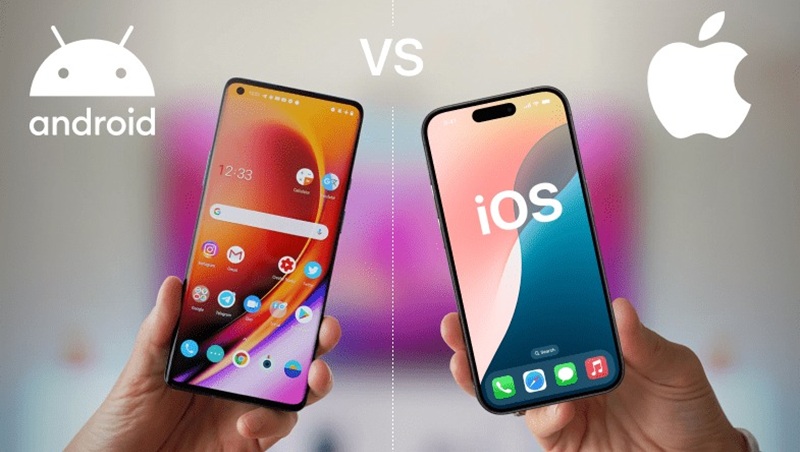The choice between iOS and Android for gaming depends on individual preferences and priorities:
iOS Advantages
- Optimization: Apple devices are optimized for their hardware, providing smoother performance and fewer compatibility issues.
- Exclusive Games: Some titles, like Apple Arcade exclusives, debut on iOS first.
- Security: iOS is considered more secure, with stringent app store guidelines.
Android Advantages
- Device Variety: Android offers a wide range of devices at various price points, accommodating different budgets.
- Customization: Android supports extensive customization and game mods.
- Hardware Options: Premium Android phones often feature advanced gaming hardware like high-refresh-rate displays and cooling systems.
Drawbacks
- iOS: Limited customization and higher device costs.
- Android: Fragmentation can lead to inconsistent performance across devices.
Ultimately, iOS excels in uniformity and stability, while Android stands out for affordability and flexibility. Choose based on your gaming priorities, budget, and ecosystem preferences.
Detailed comparison from the section between Android and iOS
Screen comparison between Android and iOS
When comparing screens on Android and iOS devices, several factors come into play:
iOS Screen Advantages
- Consistency: Apple uses high-quality displays across its devices, with uniform color accuracy and brightness. The Super Retina and Liquid Retina displays provide excellent visuals and True Tone technology for adaptive lighting.
- ProMotion Technology: High-end iPhones support ProMotion, offering refresh rates up to 120Hz for smoother scrolling and gaming.
Android Screen Advantages
- Variety: Android devices offer diverse screen options, from AMOLED to advanced OLED, catering to different preferences and budgets.
- High Refresh Rates: Many Android flagships feature refresh rates of 120Hz or even 144Hz, often at a lower cost than iPhones.
- Size and Resolution: Android phones frequently boast larger screens and higher resolutions, like QHD+ displays.
Drawbacks
- iOS: Limited screen size and resolution options.
- Android: Quality varies widely across brands and price tiers.
For uniform quality, iOS excels, but Android wins in flexibility and innovation with cutting-edge displays like foldable screens.
Configuration comparison between Android and iOS
The hardware and software configurations of Android and iOS differ significantly, affecting gaming and overall performance.
Android
- Device Variety: Android runs on devices with varied configurations, from budget to flagship models. Premium devices often feature Snapdragon or MediaTek chipsets with advanced GPUs, up to 16GB RAM, and high-refresh-rate displays (120Hz or higher).
- Customization: Supports expandable storage, external game controllers, and custom ROMs.
- Performance: Varies by brand and model due to fragmentation, with top-tier models rivaling or surpassing iPhones in raw hardware specs.
iOS
- Uniformity: Apple devices, powered by A-series chips (e.g., A16 Bionic), are tightly integrated with iOS, offering consistent performance across models. RAM is typically lower (4-8GB), but efficiency makes it sufficient.
- Graphics: The GPU in Apple’s chipsets often outperforms Android counterparts for gaming.
- Storage: Fixed, with no expandable options, but optimized software reduces storage needs.
Key Difference
iOS prioritizes software-hardware synergy, ensuring stability, while Android offers diversity and hardware customization, giving users more choices depending on budget and needs.
Gaming performance
The gaming performance of Android and iOS devices depends on their hardware, software optimization, and ecosystem features.
iOS Gaming Performance
- Hardware and Software Integration: iOS devices are built with a tightly controlled ecosystem where hardware and software are optimized for seamless performance. Apple’s A-series chips, such as the A16 Bionic, consistently deliver high benchmarks for gaming.
- Stability: iOS provides a consistent experience across devices, minimizing crashes or compatibility issues, particularly with graphically demanding games.
- App Store Quality Control: The stringent vetting of apps ensures optimized and secure games for users.
Android Gaming Performance
- Hardware Diversity: Android offers a range of devices, from budget to flagship models. Premium devices with Snapdragon 8 Gen 2 or MediaTek Dimensity chips rival Apple’s A-series for high-performance gaming.
- Customization: Android allows game mods, customizable graphics settings, and broader support for emulators.
- Advanced Features: Some Android phones include gaming-centric features like higher refresh rate screens (120Hz+), advanced cooling systems, and game optimization modes.
Comparison
- High-End Performance: iOS generally outperforms Android in stability and energy efficiency.
- Variety and Affordability: Android excels in offering a wider range of devices with innovative features.
iOS leads in consistent performance and app quality, while Android shines in customization and hardware diversity. Your choice depends on budget and gaming preferences.
Price level comparison between Android and iOS
When comparing price levels between Android and iOS devices, significant differences emerge due to variations in brand offerings, hardware capabilities, and software ecosystems.
Android Price Range
- Entry-Level Options: Android offers a broad spectrum of devices, with basic smartphones starting as low as $100. These cater to budget-conscious users and casual gamers.
- Mid-Range Devices: Phones priced between $300-$700, such as Samsung Galaxy A-series or Google Pixel A-series, provide excellent performance for their cost.
- Flagship Devices: Premium Android phones like the Samsung Galaxy S Ultra or Google Pixel Pro models typically cost $800-$1,500. These include advanced features like high-refresh-rate displays and enhanced gaming performance.
iOS Price Range
- Entry-Level iPhones: The iPhone SE, priced around $429, offers access to iOS but with older hardware.
- Flagship iPhones: High-end models like the iPhone 15 Pro Max range from $1,199 to $1,599, reflecting cutting-edge technology and Apple’s premium brand positioning.
Key Insights
- Affordability: Android dominates in affordability and choice, catering to various budgets.
- Longevity: iPhones, despite higher initial costs, often retain value longer due to software updates and resale demand.
The choice depends on your budget and preference for features versus ecosystem.

Leave a Comment